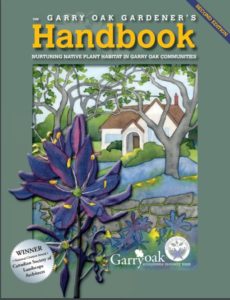Garry Oak Ecosystem Tools
For Gardeners
Garry oak ecosystems contain some of Canada’s most endangered habitats and species, and they’re unique to this region. What can a single landowner or community group do to make a difference? Actually, quite a lot.
You can help save these ecosystems by making changes to the land you manage—be it a small yard or a large acreage—that will add to the beauty and value of the land and benefit the many plants and animals that rely on Garry oak habitat.
Beautify your garden with native plants
 See The Garry Oak Gardener’s Handbook for details on planning your garden and working with native plants. This resource is a comprehensive guide to planning, planting and sourcing your garden. It will assist both the gardener and the restoration practitioner in to choose plants whose needs will be satisfied as much as possible by the environmental conditions of a site, to know the growth requirements and natural habitats of native plants and to identify and work with the natural features of specific property.
See The Garry Oak Gardener’s Handbook for details on planning your garden and working with native plants. This resource is a comprehensive guide to planning, planting and sourcing your garden. It will assist both the gardener and the restoration practitioner in to choose plants whose needs will be satisfied as much as possible by the environmental conditions of a site, to know the growth requirements and natural habitats of native plants and to identify and work with the natural features of specific property.
Plant Propagation
Plant Salvaging
Rare Plants
Maintaining Your Garden
Dealing with Deer
Additional Resources and Publications
